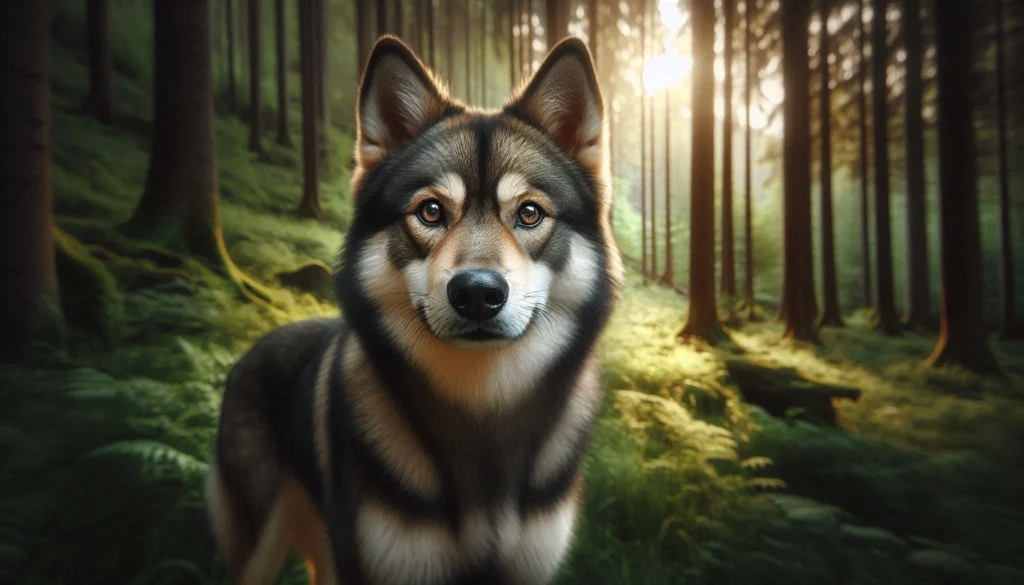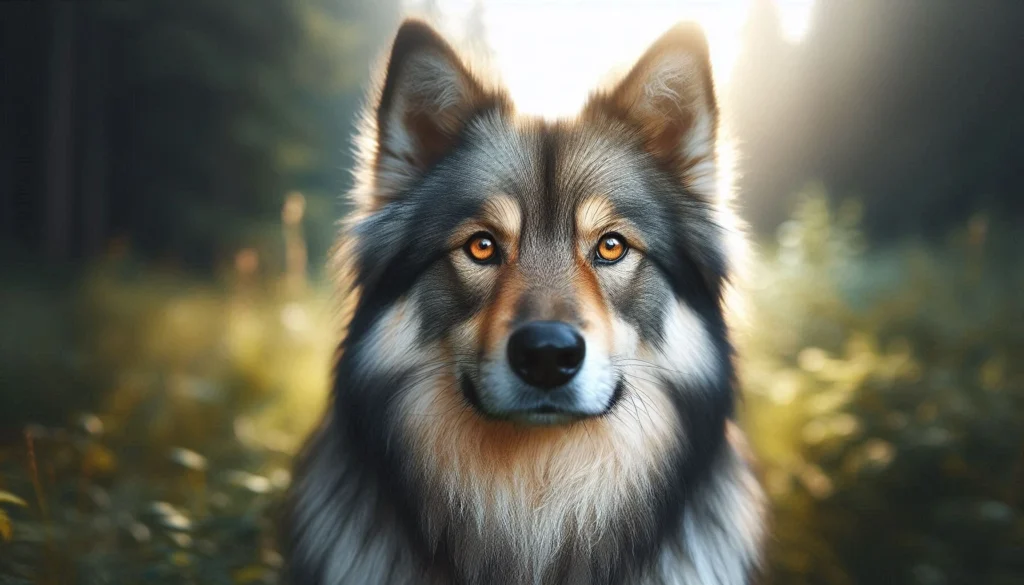Table of Contents
🐶 Tamaskan Dog Breed: History, Characteristics and Care Tips
The Tamaskan Dog is a relatively new and rare breed that has captured the hearts of dog lovers worldwide. Resembling a wolf in appearance but with the temperament of a friendly, loyal companion, the Tamaskan Dog is a unique breed that stands out for its striking looks, intelligence, and versatility. Often described as a “wolfdog without the wolf,” this breed is gaining popularity among those seeking a dog with both the appearance of a wild animal and the gentle, trainable nature of a domestic pet. Whether you’re an experienced dog owner or a first-time pet parent, the Tamaskan Dog offers a combination of beauty, brains, and companionship that is hard to resist.
📜 Short History

The Tamaskan Dog originated in Finland in the 1980s and 1990s, created by a group of breeders who wanted to develop a dog that resembled a wolf but had the temperament of a domestic dog. The breed was developed by crossing several northern breeds, including Siberian Huskies, Alaskan Malamutes, and German Shepherds, among others. The goal was to create a dog that not only looked like a wolf but also had the working ability and intelligence of the breeds in its lineage.
Interestingly, the name “Tamaskan” is derived from the Native American word meaning “mighty wolf,” reflecting the breed’s intended appearance and strength. Despite its relatively short history, the breed has quickly gained a following, particularly in Europe and North America, where it is appreciated for its unique look and versatile abilities.
The Tamaskan Dog is not recognized by major kennel clubs like the American Kennel Club (AKC) or the Kennel Club (UKC), but it has its own dedicated breed clubs, including the Tamaskan Dog Register (TDR), which maintains the breed standard and oversees its development.
📌 Quick Facts & Essential Details

| Category 🏷️ | Details 📖 |
|---|---|
| 🐶 Breed Name | Tamaskan Dog |
| 📛 Other Names | Tam, Tamaskan Wolfdog (misleading name, not a true wolfdog) |
| 📍 Origin | Finland |
| 🏆 Recognized By | TDR (Tamaskan Dog Register), NKC (National Kennel Club) |
| 📏 Size Variants | Standard (No miniature or giant versions) |
| ⚖️ Weight Range | 50 – 100 lbs (23 – 45 kg) |
| 📐 Height Range | 24 – 28 inches (61 – 71 cm) |
| 🎂 Lifespan | 14 – 16 years |
🐕🦺 Coat & Appearance
| Category 🏷️ | Details 📖 |
|---|---|
| 🧥 Coat Type | Thick, double coat |
| 🎨 Coat Colors | Wolf-gray, Red-gray, Black-gray, Silver-gray |
⚡ Energy & Personality

| Category 🏷️ | Details 📖 |
|---|---|
| 🔋 Energy Level | Very High – Requires lots of physical activity |
| 🏅 Breed Group | Working Group (Unofficial) |
| 🐾 Temperament | Intelligent, Gentle, Loyal, Social |
| 🏡 Apartment-Friendly? | No – Needs space to roam |
| 🎓 Trainability | High – Smart and eager to please but needs firm training |
🏥 Health & Care Needs

| Category 🏷️ | Details 📖 |
|---|---|
| 💉 Common Health Issues | Hip Dysplasia, Degenerative Myelopathy, Epilepsy |
| 🛁 Grooming Needs | Moderate – Weekly brushing, more during shedding season |
| 🍂 Shedding Level | High – Heavy shedding during seasonal changes |
| 🏃 Exercise Needs | Very High – Requires long walks, runs, and mental stimulation |
🏡 Suitability & Compatibility

| Category 🏷️ | Details 📖 |
|---|---|
| 🏠 Best For | Active Families, Outdoor Enthusiasts, Experienced Owners |
| 🚫 Not Ideal For | Apartment Dwellers, Sedentary Lifestyles |
| 🔊 Barking Level | Low – More likely to howl or “talk” |
| 👶 Good With Kids? | Yes – Gentle and affectionate with proper socialization |
| 🐕 Good With Pets? | Yes – Generally good with other dogs, but socialization is needed |
| 👩🏫 First-Time Owner Friendly? | No – Requires experienced handling |
| 🌡️ Weather Tolerance | Excellent in cold weather, struggles in hot climates |
🎉 Fun & Extra Info
| Category 🏷️ | Details 📖 |
|---|---|
| 🌟 Famous Dogs of This Breed | Used in films and TV shows as wolf substitutes |
| 🧠 Intelligence Level | Very High – Learns quickly and enjoys challenges |
| 🐕 Common Behavioral Issues | Separation Anxiety, Stubbornness, Destructive Behavior if Bored |
| 🥩 Best Diet | High-protein diet, raw or premium kibble |
| 🚫 Foods to Avoid | Processed foods, Excess grains, Onions, Chocolate |
| 🎈 Fun Fact | Tamaskans look like wolves but have zero wolf DNA! |
| 💰 Price of Puppy | $1,500 – $3,500 (Depending on breeder and lineage) |
✅ Final Thoughts
The Tamaskan Dog is a wolf-like, highly intelligent, and energetic breed that thrives in an active household. They are affectionate, social, and require plenty of training and exercise. If you’re looking for a loyal, trainable, and adventurous companion, the Tamaskan might be the perfect fit! 🏔️🐕
📊 Comparison of Similar Dog Breeds
🐺 Tamaskan Dog vs. Czechoslovakian Wolfdog 🐺


| Feature 🏆 | Tamaskan Dog ❄️ | Czechoslovakian Wolfdog 🌲 |
|---|---|---|
| 📍 Origin | Finland (Developed) | Czechoslovakia |
| 🏅 Recognized By | TDR, ARBA (Not AKC) | FCI, UKC |
| 📏 Size Variants | Large | Large |
| ⚖️ Weight Range | 50-100 lbs (23-45 kg) | 44-57 lbs (20-26 kg) |
| 📏 Height Range | 24-33 inches (61-84 cm) | 24-26 inches (60-65 cm) |
| ⏳ Lifespan | 14-16 years | 12-15 years |
| 🐶 Coat Type | Thick double coat | Thick double coat |
| 🎨 Coat Colors | Wolf-gray, red-gray, black-gray | Gray, silver-gray, yellow-gray |
| ⚡ Energy Level | High | Very High |
| 🏡 Breed Group | Working Group | Working Group |
| 🔊 Barking Level | Moderate | Low (howls instead) |
| 👶 Good With Kids? | Yes, if well-socialized | Can be reserved, needs supervision |
| 🐕 Good With Pets? | Yes, if raised together | May have high prey drive |
| 🧠 Intelligence Level | Very High | Very High |
| ⚠️ Common Behavioral Issues | Separation anxiety, stubbornness | Strong-willed, independent |
| 💰 Price of Puppy | $1,500 – $3,500 | $1,000 – $2,500 |
| Overall Rating | ⭐⭐⭐⭐⭐ (Loyal & Trainable) | ⭐⭐⭐⭐ (Intelligent but Challenging) |
Conclusion
The Tamaskan Dog is a remarkable breed that combines the stunning appearance of a wolf with the friendly, loyal nature of a domestic dog. With their intelligence, versatility, and affectionate personality, they make excellent companions for active families who can meet their exercise and socialization needs. Whether you’re drawn to their wild looks or their gentle temperament, the Tamaskan Dog is a breed that offers the best of both worlds.
If you’re considering adding a Tamaskan to your family, be sure to do your research, meet with breeders, and consider if your lifestyle is a good match for this unique and captivating breed.
FAQ
Is the Tamaskan Dog a dangerous breed?
No, the Tamaskan Dog is not a dangerous breed. Despite their wolf-like appearance, Tamaskans are known for being gentle, friendly, and loyal. They are good with children and other animals when properly socialized and trained.
Is the Tamaskan Dog a good guard dog?
While Tamaskans are protective of their families and will alert their owners to any unusual activity, they are not typically aggressive and do not make the best guard dogs. They are more likely to befriend strangers than to act as a deterrent, so if you’re looking for a guard dog, this breed may not be the best choice.


